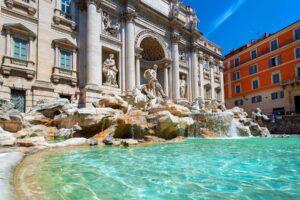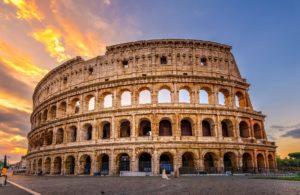Fodor's Expert Review Santa Maria Maggiore
Despite its florid 18th-century facade, Santa Maria Maggiore is one of the city's oldest churches, built around 440 by Pope Sixtus III. One of Rome's four great pilgrimage churches, it's also the city center's best example of an early Christian basilica—one of the immense, hall-like structures derived from ancient Roman civic buildings and divided into thirds by two great rows of columns marching up the nave. The other three major basilicas in Rome (San Giovanni in Laterano, St. Peter's, and St. Paul Outside the Walls) have been largely rebuilt. Paradoxically, the major reason why this church is such a striking example of early Christian design is that the same man who built the undulating exteriors circa 1740, Ferdinando Fuga, also conscientiously restored the interior, throwing out later additions and, crucially, replacing a number of the great columns.
Precious 5th-century mosaics high on the nave walls and on the triumphal arch in front of the main altar bear splendid testimony... READ MORE
Despite its florid 18th-century facade, Santa Maria Maggiore is one of the city's oldest churches, built around 440 by Pope Sixtus III. One of Rome's four great pilgrimage churches, it's also the city center's best example of an early Christian basilica—one of the immense, hall-like structures derived from ancient Roman civic buildings and divided into thirds by two great rows of columns marching up the nave. The other three major basilicas in Rome (San Giovanni in Laterano, St. Peter's, and St. Paul Outside the Walls) have been largely rebuilt. Paradoxically, the major reason why this church is such a striking example of early Christian design is that the same man who built the undulating exteriors circa 1740, Ferdinando Fuga, also conscientiously restored the interior, throwing out later additions and, crucially, replacing a number of the great columns.
Precious 5th-century mosaics high on the nave walls and on the triumphal arch in front of the main altar bear splendid testimony to the basilica's venerable age. Those along the nave show 36 scenes from the Old Testament (unfortunately, tough to see clearly without binoculars), and those on the arch illustrate the Annunciation and the Youth of Christ. The resplendent carved-wood ceiling dates from the early 16th century; it's supposed to have been gilded with the first gold brought from the New World. The inlaid marble pavement (called cosmatesque, after the family of master artisans who developed the technique) in the central nave is even older, dating from the 12th century.
The Cappella Sistina (Sistine Chapel), in the right-hand transept, was created by architect Domenico Fontana for Pope Sixtus V in 1585. Elaborately decorated with precious marbles "liberated" from the monuments of ancient Rome, the chapel includes a lower-level museum in which some 13th-century sculptures by Arnolfo da Cambio are all that's left of what was the once richly endowed chapel of the presepio (Christmas crèche), looted during the Sack of Rome in 1527.
Directly opposite, on the church's other side, stands the Cappella Paolina (Pauline Chapel), a rich Baroque setting for the tombs of the Borghese popes Paul V—who commissioned the chapel in 1611 with the declared intention of outdoing Sixtus's chapel across the nave—and Clement VIII. The Cappella Sforza (Sforza Chapel) next door was designed by Michelangelo and completed by Della Porta. Just right of the altar, next to his father, lies Gian Lorenzo Bernini; his monument is an engraved slab, as humble as the tombs of his patrons are grand. Above the loggia, the outside mosaic of Christ raising his hand in blessing is one of Rome's most beautiful sights, especially when lighted at night.
READ LESS








